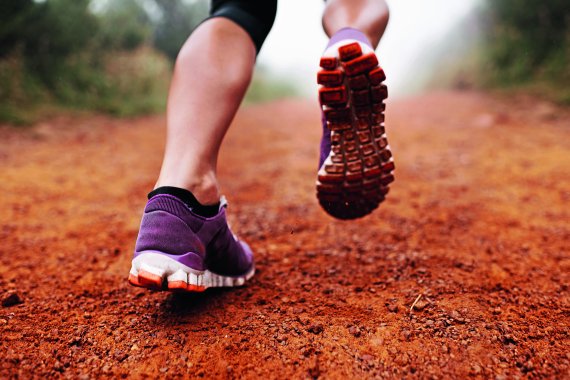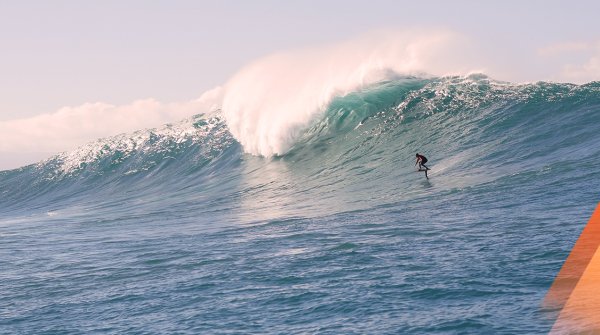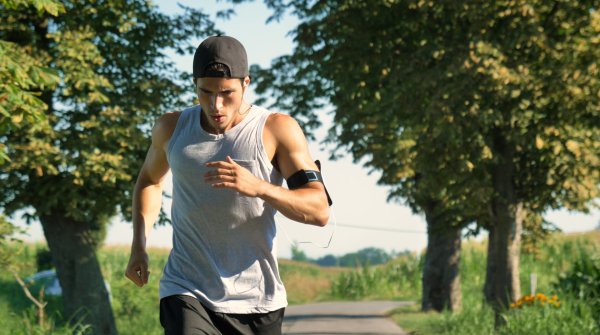
If a sudden pain occurs at the heel while jogging, the alarm bells should ring. If you ignore it or underestimate it, it can sometimes come to a longer training break, which could have been saved by correct prevention. We are talking about plantar fasciitis - a disease of the heel that occurs mainly in hobby runners, but also in professional athletes.
The tricky thing is that the pain runs out at the first occurrence after a while, but already at the next training session it returns and gets worse and worse - especially if sprints are built into the run. In the further course, the pain is no longer limited to the sports phases, but also occurs after getting up and later even at rest. In order to prevent this frequent disease, there are a few tips and tricks that should be followed.
Plantar fasciitis is an inflammation of the plantar fascia - also known as plantar tendon. It can be imagined as a tendon plate connecting the metatarsal bone and the heel bone. Especially for runners it is an important part of the foot. In the event of pressure from ground contact, it gives the foot stability by cushioning the swing in the stance leg phase when it occurs. It maintains the longitudinal arch of the foot and prevents the arch of the foot from sinking and thus the development of a flat foot.
If the pressure is applied to the plantar fascia during the ground contacts too high, the tendon plate can overstretch and inflame. The severity of the disease varies from patient to patient: from a strain to cracks to a tear in the plantar fascia, anything is possible. Therefore, you should act in any case and initiate the healing process tailored to your own body - of course with the help of an expert doctor!

The disease is usually caused by too much training, which is mainly carried out on hard, asphalted ground. Especially dangerous is a sudden increase of the running intensity. Therefore, the workload should be continuously increased for the benefit of the feet.
But also overweight, running with worn, unsuitable shoes or misalignments of the feet, especially flat feet, can (co-)cause the disease. In addition to the exemplary heel pain, an increased pressure sensitivity of the sole also points to a problem with the plantar tendon.
Plantar fasciitis is often accompanied by the formation of a heel spur - a spine-like outgrowth of bone on the heel bone. However, this does not mean that all people with heel spur also suffer from plantar fasciitis. Many heel spurs do not make themselves painfully noticeable at all. Accordingly, the treatment also varies from patient to patient. The following treatment measures are frequently used:
- shock wave therapy
- Use of deposits
- physiotherapy
- self-massage
- cooling therapies
- injections
- foot tapes
- surgery
In addition to all these possibilities, a running break should be taken in any case, as otherwise the healing process will be delayed or even stagnated.
Just like the treatment options, the duration of the healing process also varies, which can range from six weeks to one year. In general, if the pain in the foot persists, a doctor should be consulted to rule out other injuries such as a fatigue fracture, which can also be associated with too much training.
In order to avoid a running ban in the first place, physiotherapist Laura Molitor recommends preventing the disease. "It is especially important for runners to strengthen the muscles in the foot, to stretch and massage the foot - as a kind of additional training," she says. And even if in most cases only one foot is affected by the disease, preventive measures should be taken with both feet.
Fixed times when you take care of "foot fitness" can help to integrate prevention into everyday life. The exercise of rolling the feet over a hedgehog ball is just as simple as it is effective - the circling of the foot is also a good workout. "And the stretching of the feet is important. This means, for example, pulling the toes forward. This can also be done well by standing directly in front of a wall. While the rest of the foot remains on the floor, the toes press against the wall," explains the physiotherapist.
It is not only extremely important, but also beneficial and pleasant to massage oneself and to smooth out the musculature. You can start with both hands past the toes and work your way through to the end of the foot. But not only the pure foot treatment prevents the unpleasant heel injury - additional calf training is also helpful.
You can put yourself on the same level with your toes and ball of your foot. Then you lower your heels and push yourself up with the force of your calves until you stand on your toes. To simplify things a bit, you can do this without a step by standing on your toes.
- Awards
- Mountain sports
- Bike
- Fitness
- Health
- ISPO Munich
- Running
- Brands
- Sustainability
- Olympia
- OutDoor
- Promotion
- Sports Business
- Textrends
- Triathlon
- Water sports
- Winter sports
- eSports
- SportsTech
- OutDoor by ISPO
- Heroes
- Transformation
- Sport Fashion
- Urban Culture
- Challenges of a CEO
- Trade fairs
- Sports
- Find the Balance
- Product reviews
- Newsletter Exclusive Area
- Magazine








